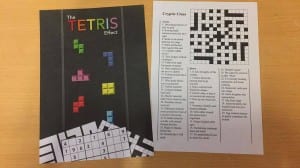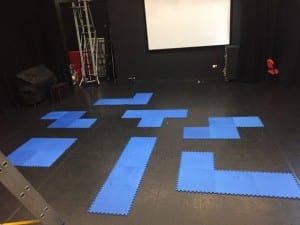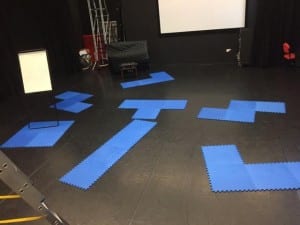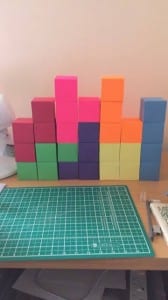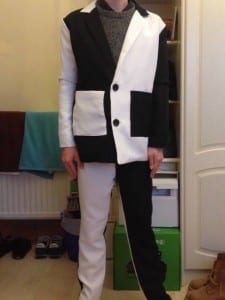I performed my show for the first time to a public audience and I am very pleased with how it went. The comedy was received very well and I could improvise some jokes in places that were appropriate again to good reception. I was even asked by my tutor after the show where I had sourced one of the jokes from despite it being something I came up with myself just before the show started. Fortunately, I had the audience on my side and very relaxed and the performance felt more like a conversation at points. Something I hadn’t really expected was for the audience to talk back at certain points. I felt that this a positive thing though as it showed that the audience were comfortable and engaged with the piece.
When learning the script, I was mainly focused on memorising the 36 cue words in order as this was essential for the tech to work and the crossword animation to make sense. Other than that, I practised the gist of my narrative and certain key details. This meant that during the performance, the monologue could flow naturally and I could improvise in places, creating an honest delivery of my piece.
There were a couple of minor slip-ups, but nothing which affected the piece as a whole. In the show, I used a whiteboard pen twice, and by the second time I needed it, I forget where I had put it down the first time. I had to quickly run around to find the pen but improvised through it so as not to affect the pace of the performance. Obviously if I was to do this performance again, I would keep a better track of the pen. There were also a couple of moments where I slipped slightly on the judo matts but I kept my balance and in future, I would be more conscious of my footing on the matts which can slide so easily.
There was another mistake in the set-up which I am disappointed I made. I had some leaflets made by media student, Rachel Parker, which included the crossword and clues so that the audience could follow as each one was solved. They are professionally designed and advertise the show well.
However, due to the amount of set I needed to prepare before the show started, I didn’t manage to put the leaflets out on the seating bank. Other than this, the show was successful and ran smoothly.
The feedback I received was very positive and I mostly praised the comic timing and wit of the piece. I asked some people about whether the ending provided anything to take away and I think my attempt at something thought provoking at the end might not have worked completely in the way I intended. Overall, I believe that the performance was entertaining and engaging and for that is the most important target for a piece of theatre.
